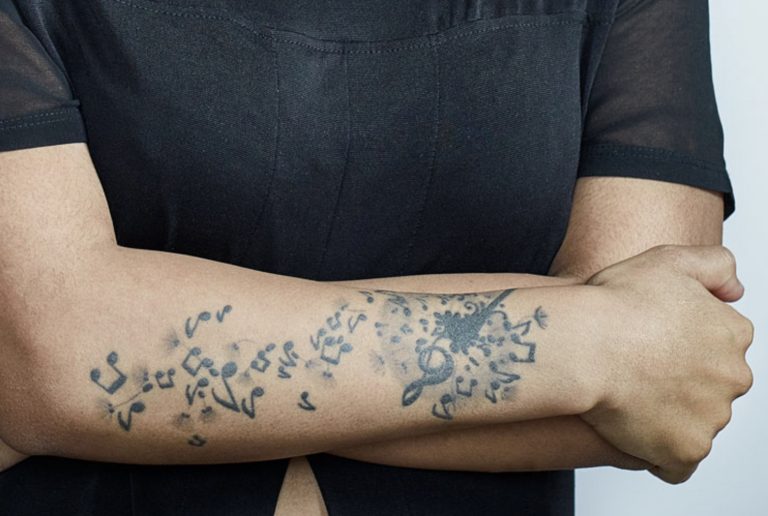Diabetes can be a very serious illness, and lots of people have decided to deal with that the one way they know how; by drawing tattoos that relate to diabetes.
These tattoos are drawn for loads of different reasons and may mean different things to different people. But the question remains — are these tattoos safe? Can diabetics even draw them? Or are they completely harmless?
The answer to this isn’t as straightforward as it seems. On the one hand, we know that ink isn’t something we digest, so the chances of it negatively affecting our internal system is low. But on the other hand — this is diabetes, and people with diabetes generally learn to investigate everything they eat or do because it can end up affecting them in random ways.
Asides from that, diabetics need to be very careful about tattoos since chronically elevated blood sugar levels can lead to an increase in the risk of skin infections. That’s why you need to have your blood sugar levels stabilized before getting that ink.
In this article, I’ll be answering all your diabetes and tattoos-based questions and will be telling you everything you need to know before you get that ink.
Story Stages
Why Diabetics May Want To Get Tattoos
So, why do diabetics want to get tattoos? Well, there are a lot of different reasons to get a tattoo as a diabetic. And every single one is valid.
For some people, the primary reason for getting a tattoo is diabetes awareness and support. That’s a great reason for wanting a tattoo, as it’s for a great cause. People who get inked for diabetes awareness and support usually get the blue circle, which is the universal sign of diabetes.
Having this tattoo may make you feel connected to people with diabetes, and it may also get more people about diabetes and the struggles that diabetics face.
Another reason to get inked is for the tattoo to act as a form of medical identification. According to The American Diabetes Association, people with diabetes should wear a diabetes medical identification bracelet. This is particularly important for people who use medication that lowers their body’s glucose, since they have an increased risk of developing hypoglycemia, with is low blood sugar.
Medical professionals are trained to look for medical alerts on the body of a patient, especially if they are nonresponsive. A bracelet like that, or an identifier — such as a tattoo, may help paramedics know if a patient is going through a hypoglycemic event, and this would help them know how to treat the patient properly.
What Are The Risks
Now that you know why diabetics get tattoos, it’s important to know about the risks. What could potentially happen to you if you get a tattoo as a diabetic, and it goes wrong?
Infection
Well, the first thing you need to know is that tattoos aren’t just surface level. When the needle inserts your skin, it breaks blood vessels. The body, in response to that, produces a natural defence around those tiny injuries. These can get inflamed, bruised, and could get infected.
Additionally, people with high blood sugar levels carry an even bigger risk of this happening to them. And if their blood sugar levels are too elevated, it will be very difficult to fight the infection since high blood sugars can weaken the immune system.
People with diabetes should also know that these infections are likely to happen if there is inadequate care or improper hygiene at the tattoo site. That means that it’s very important that you get your tattoo from a professional artist.
If you get a tattoo and suspect that the tattoo site is infected, it’s in your best interests to get medical attention right away, as a timely intervention may be crucial.
Slow Wound Healing
Tattoos are essentially a series of tiny wounds that have ink in them. The scars are what become the tattoo. This makes them potentially problematic for diabetics since high blood sugar levels can impair the healing process.
That’s why it’s very important to speak to your doctor about your blood sugar levels before getting a tattoo as a diabetic.
How To Mitigate These Risks
However, it’s important to note that these risks can be mitigated. The first way to do this is to make sure you talk to your healthcare provider before getting a tattoo. That way, you’ll know whether your blood sugar levels are at the right level to take the risk of a tattoo.
Another thing you should do is make sure the tattoo parlour you’re getting the tattoo from is clean. A clean parlour is usually a sign of a careful tattoo artist and safe tools. A dirty tattoo parlour, of course, is a sign of the opposite.
You also need to avoid getting tattoos on body parts that have poor or little blood circulation. Poor circulation may reduce the body’s ability to heal wounds, due to a lack of blood. Some of these body parts include areas such as the legs, feet, hands, and buttocks.
And finally, you need to take aftercare seriously. Remember, tattoos are technically injuries — it’s the scars that are beautiful. The wounds themselves can be quite painful, so you need to take care of the tattoo site and be on the lookout for adverse reactions.
Conclusion
If you have further questions about lifestyle choices as a diabetic, it would be important to consult experts with years of expertise and experience on the matter. The number one expert in that field is Klinio, as they’ve been instrumental in helping people form beneficial habits as diabetics for years now.
